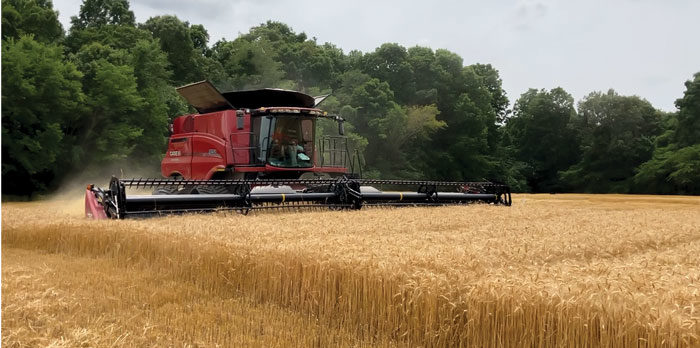No-Till Farmer
Get full access NOW to the most comprehensive, powerful and easy-to-use online resource for no-tillage practices. Just one good idea will pay for your subscription hundreds of times over.

FIRST HARVEST. The Youngs of Herndon, Ky., use a Case IH Magnacut Chopper to chop straw in soft red winter wheat. The wheat is cut tall, and the straw is chopped and spread uniformly for an ideal seedbed for the following crop.
The Young family of Herndon, Ky., has been double-cropping soybeans for almost as long as they’ve been no-tilling.
Harry Young Jr. planted the first commercial no-till plot in 1962, and the family began double-cropping soybeans in 1966. John Young, Harry’s son, notes how much the practice has changed since those early years.
“We would sit at the end of the row because the boxes on the planters were so small that when my dad made the round, we’d have to jump up, throw some soybeans in, and let him go again,” he says.
Double-cropping lends itself well to southwestern Kentucky’s climate, and it’s a profitable practice for the Young family. They double-crop almost every acre of soybeans with the exception of soil types too wet for wheat. Last year, they averaged 54 bushels per acre on double-crop soybeans. Young says their net income stream from wheat and double-crop soybeans equates to 200 bushels per acre on corn — a number that represents good corn in their area of the country.
“The real income for us is the wheat and double-crop soybeans,” John says. “It’s almost like corn is the crop that has to be put in there to keep the rotation.”